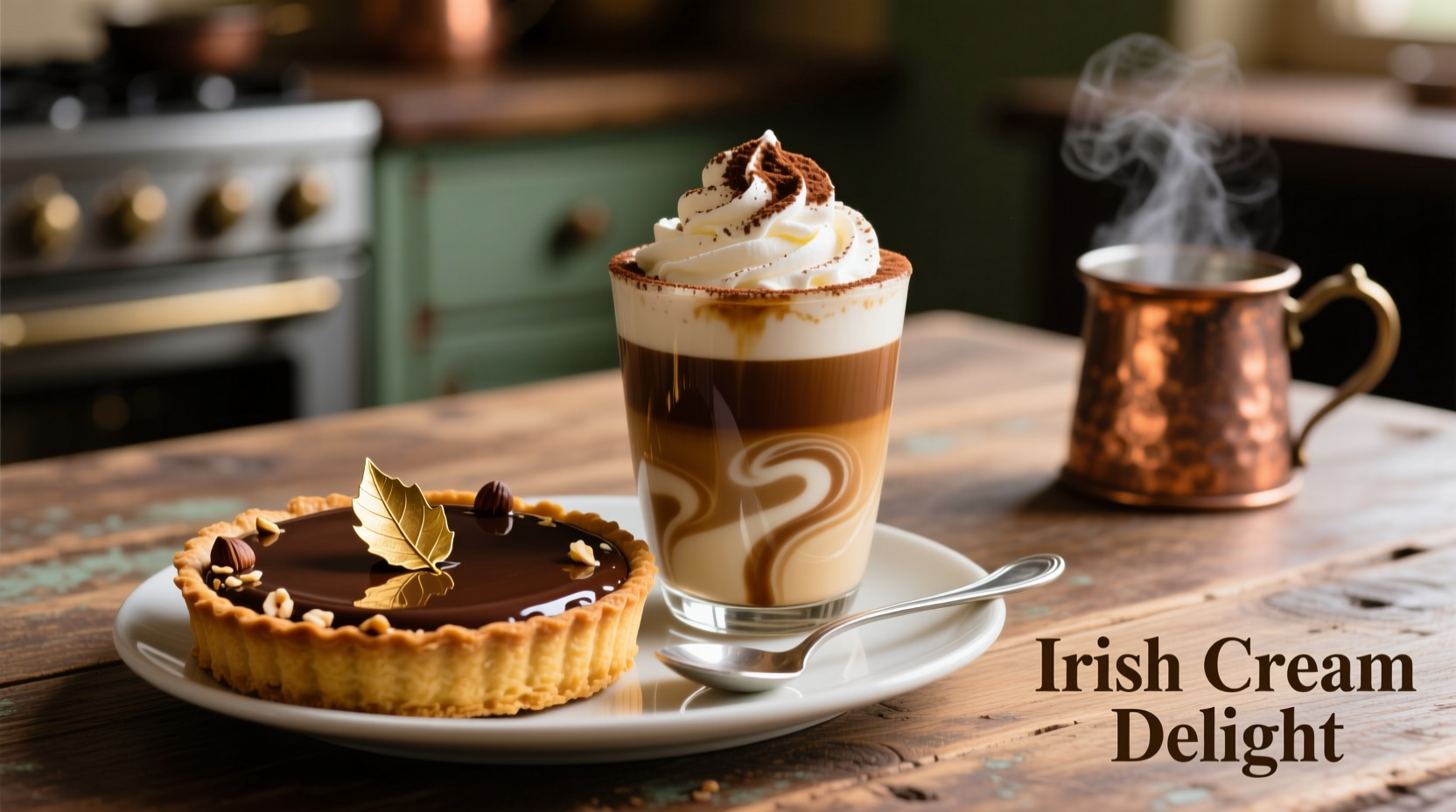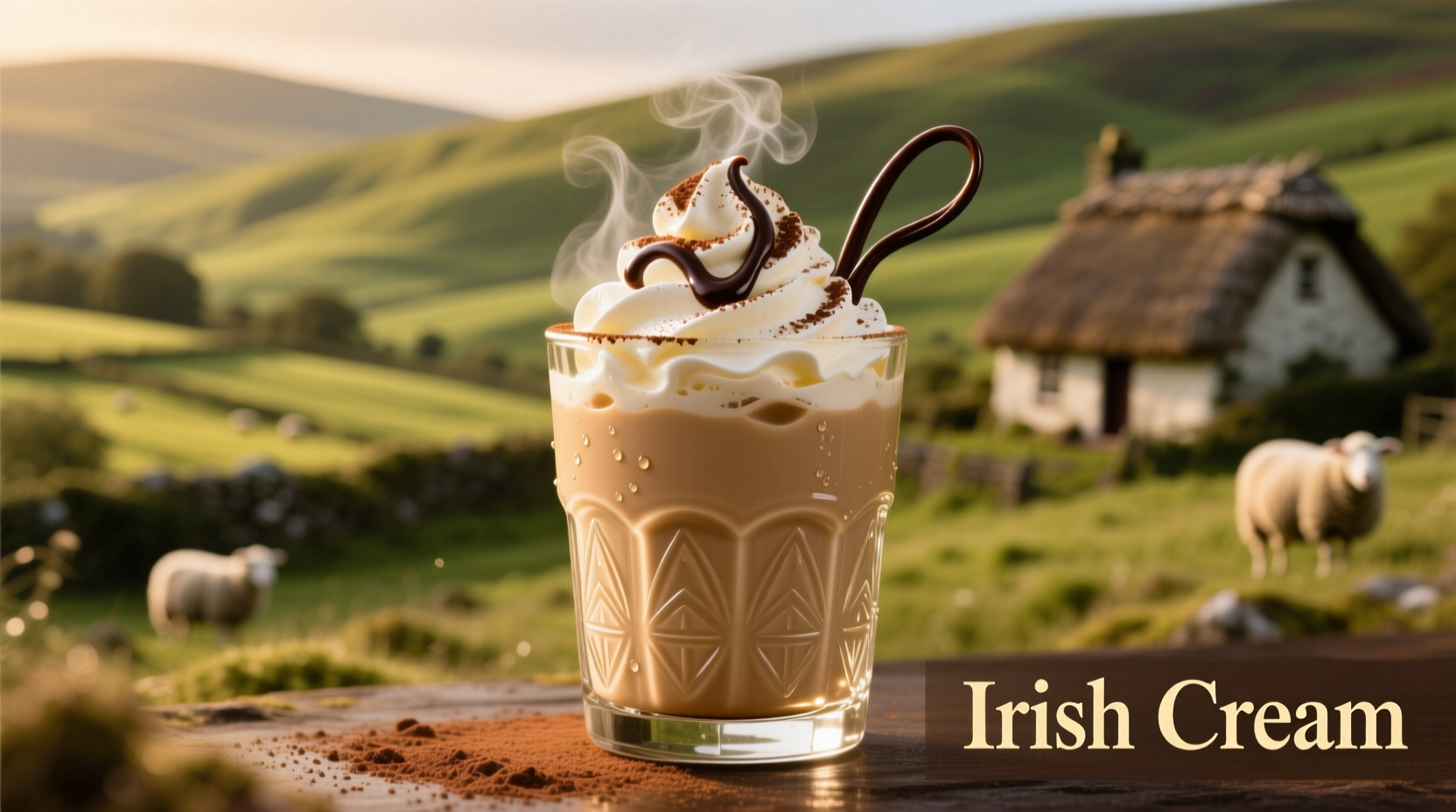When you encounter "Irish cream flavor" in foods, beverages, or products, you're experiencing a carefully crafted sensory profile inspired by the famous Irish cream liqueur. This flavor combination has become so popular that it extends far beyond the original alcoholic beverage into countless culinary applications.
The Essential Components of Irish Cream Flavor
Irish cream flavor isn't just one single element—it's a harmonious blend of complementary tastes that work together to create its signature profile. Understanding these components helps explain why this flavor has become so widely recognized and appreciated:
- Dairy cream foundation—provides the rich, smooth mouthfeel
- Irish whiskey notes—adds subtle warmth without overwhelming alcohol presence
- Chocolate or cocoa elements—contributes sweetness and depth
- Coffee undertones—enhances complexity with roasted notes
- Vanilla accents—rounds out the flavor profile with sweetness
Unlike the alcoholic version, Irish cream flavor in non-alcoholic products uses natural and artificial flavorings to recreate this distinctive profile without containing actual alcohol. Food scientists achieve this through careful formulation that captures the essence while meeting various product requirements.
How Irish Cream Flavor Evolved: A Historical Timeline
The story of Irish cream flavor begins with its alcoholic namesake, but has evolved significantly for broader culinary applications:
- 1974—Baileys Irish Cream launches as the first commercial Irish cream liqueur, created by Gilbeys of Ireland
- 1980s—Irish cream flavor begins appearing in specialty coffee shops and dessert menus
- 1990s—Major food manufacturers start developing non-alcoholic Irish cream flavorings for wider product applications
- Early 2000s—Irish cream flavor becomes mainstream in coffee creamers, ice creams, and baking ingredients
- Present day—Irish cream flavor appears in over 200+ food and beverage categories worldwide
According to the International Beverage Association, the global market for Irish cream-flavored products has grown by approximately 7% annually over the past decade, demonstrating its enduring popularity beyond seasonal trends.
Irish Cream Flavor vs. Similar Cream Flavors: Key Differences
Many cream-based flavors share similarities, but Irish cream has distinct characteristics that set it apart. Understanding these differences helps consumers and culinary professionals make informed choices:
| Flavor Type | Key Components | Alcohol Content | Primary Use Cases |
|---|---|---|---|
| Irish Cream | Cream, whiskey notes, chocolate, coffee | Non-alcoholic in flavoring applications | Coffee, desserts, baking, ice cream |
| Heavy Cream | Pure dairy only | None | Cooking, whipping, thickening |
| Coffee Cream | Cream, coffee flavoring | None | Coffee enhancement only |
| Chocolate Cream | Cream, chocolate | None | Desserts, baking |
The distinctive combination of whiskey-inspired notes with chocolate and coffee elements creates what food scientists call a "flavor synergy"—where the combined effect is greater than the sum of individual components. This synergy explains why Irish cream flavor has maintained popularity while other cream flavors come and go.
Practical Applications of Irish Cream Flavor
Irish cream flavor has moved far beyond its origins to become a versatile culinary component. Here's where you'll most commonly encounter it and how to use it effectively:
Coffee and Beverages
Irish cream flavoring transforms ordinary coffee into a dessert-like beverage. When using Irish cream flavor in coffee:
- Add flavoring to hot coffee first, then creamer for best integration
- Use approximately 1-2 teaspoons per 8oz cup for optimal flavor
- Complements medium to dark roast coffees better than light roasts
Desserts and Baking
Chefs leverage Irish cream flavor to enhance various sweet creations:
- Ice cream—creates a rich, complex base that pairs well with chocolate swirls
- Cakes and cupcakes—works especially well with chocolate or vanilla bases
- Cookies—adds depth to chocolate chip or shortbread varieties
- Puddings and mousses—provides sophisticated flavor without alcohol content

Understanding Non-Alcoholic Irish Cream Flavorings
Most Irish cream flavor products you encounter in grocery stores are completely non-alcoholic. The U.S. Food and Drug Administration regulates flavorings to ensure they're safe for consumption and properly labeled.
When shopping for Irish cream flavoring, check labels for:
- Natural flavorings—derived from actual food sources
- Artificial flavorings—chemically created to mimic the profile
- Sugar content—varies significantly between products
- Alcohol content—true flavorings contain none, while liqueurs do
Food manufacturers use sophisticated techniques to capture the essence of Irish cream without alcohol. According to research published in the Journal of Food Chemistry, the key volatile compounds that create authentic Irish cream flavor include diacetyl (buttery notes), vanillin (vanilla), and specific cocoa alkaloids that mimic the chocolate element.
Creating Authentic Irish Cream Flavor at Home
While commercial flavorings offer convenience, you can create your own Irish cream flavor profile with simple ingredients:
- Mix 1 cup heavy cream with 2 tablespoons chocolate syrup, 1 teaspoon vanilla extract, and 1/2 teaspoon instant coffee granules
- For alcohol-free version, omit whiskey but consider adding 1/4 teaspoon oak extract for whiskey-like notes
- Chill thoroughly before use to allow flavors to meld
Professional chefs often use this base for Irish cream-flavored desserts, adjusting ratios based on the specific application. The key is balancing the coffee, chocolate, and creamy elements without letting any single component dominate.











 浙公网安备
33010002000092号
浙公网安备
33010002000092号 浙B2-20120091-4
浙B2-20120091-4